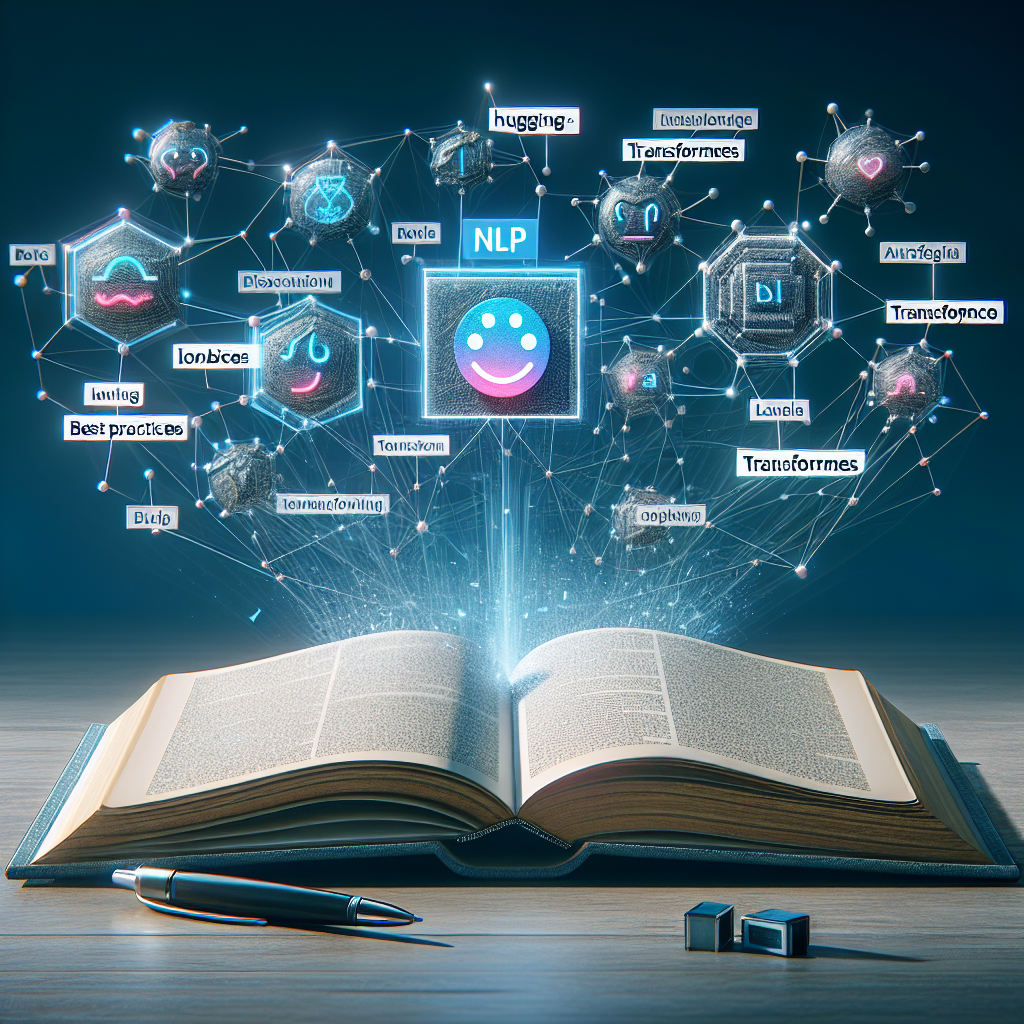Mastering NLP with Hugging Face Transformers: Technical Insights and Best Practices

```html
In the dynamic world of artificial intelligence (AI) and machine learning (ML), the ability to understand and analyze text data is paramount. Natural Language Processing (NLP) has revolutionized how we interact with technology, enabling machines to understand and generate human language. One of the key tools facilitating advancements in NLP is the Hugging Face Transformers library. In this blog post, we will explore the technical details of Hugging Face Transformers, discuss its key components, delve into real-world applications, and share best practices to optimize your NLP projects using this powerful library.
1. Introduction to Hugging Face Transformers
Hugging Face Transformers is an open-source library that provides a comprehensive framework for building and deploying state-of-the-art NLP models. Developed by Hugging Face, it includes pre-trained models, modular components, and easy-to-use APIs that simplify the process of working with transformers and other NLP architectures.
Technical Details:
- Support for Multiple Architectures: Includes popular transformer architectures such as BERT, GPT, T5, RoBERTa, and more.
- Pre-trained Models: Provides access to a vast array of pre-trained models, reducing the need for extensive training from scratch.
- Tokenizers: Efficient tokenization utilities that handle the processing of text data into model-compatible formats.
- Trainer API: Facilitates the training and fine-tuning of models with minimal code, offering built-in functionality for optimization and evaluation.
- Integration with Deep Learning Frameworks: Compatible with both TensorFlow and PyTorch, allowing flexibility in model development and deployment.
- Hugging Face Hub: A platform for community-driven model sharing, enabling easy access to pretrained models and datasets.
2. Key Components of Hugging Face Transformers
The Hugging Face Transformers library consists of several integral components:
- Model Classes: Abstract model classes that simplify the instantiation and use of transformer models for various NLP tasks.
- Tokenizers: Classes that convert raw text data into tokenized inputs, ensuring compatibility with specific model architectures.
- Datasets Library: A companion library that provides easy access to a wide range of curated NLP datasets for training and evaluation.
- Pipeline API: High-level API that abstracts away the complexity of model inference, simplifying common tasks such as text classification, question answering, and text generation.
- Trainer: A utility that provides built-in methods for training and evaluating models, including support for distributed training.
3. Real-World Applications
Hugging Face Transformers enables numerous applications across various industries:
- Chatbots and Virtual Assistants: Powers conversational agents capable of understanding and generating human-like responses, improving customer service and user experience.
- Text Summarization: Generates concise summaries of long documents, aiding in information retrieval and comprehension.
- Sentiment Analysis: Analyzes customer reviews and social media posts to gauge public sentiment and inform business strategies.
- Named Entity Recognition (NER):: Identifies and classifies entities in text data, useful in information extraction and automated content categorization.
- Machine Translation: Translates text between languages, facilitating cross-language communication and content localization.
4. Success Stories
Several organizations have leveraged Hugging Face Transformers to enhance their NLP capabilities:
- Microsoft: Utilized Hugging Face Transformers in Azure Cognitive Services to improve the performance and accuracy of their NLP-related offerings.
- Netflix: Employed the library for sentiment analysis and content recommendation, enhancing user experience and engagement on their platform.
5. Lessons Learned and Best Practices
To maximize the potential of Hugging Face Transformers, consider the following best practices:
- Select the Right Model: Choose the transformer architecture that best fits your task, balancing performance and computational requirements.
- Leverage Pre-trained Models: Utilize pre-trained models and fine-tune them on your specific dataset to save time and computational resources.
- Optimize Tokenization: Be mindful of tokenization strategies, ensuring that text data is preprocessed effectively to match the model's requirements.
- Use the Pipeline API: Start with the Pipeline API for rapid prototyping and experimentation with different NLP tasks.
- Experiment with Hyperparameters: Conduct hyperparameter tuning to optimize model performance for your specific use case.
- Monitor and Evaluate: Implement rigorous evaluation metrics and continuous monitoring to track model performance and improve over time.
Conclusion
Hugging Face Transformers is a versatile and powerful toolkit that has transformed the landscape of NLP. By leveraging its extensive suite of tools and following best practices, developers and data scientists can build and deploy state-of-the-art NLP models with ease. Whether you're developing chatbots, performing sentiment analysis, or building complex language models, Hugging Face Transformers provides the flexibility and performance needed to succeed. Embrace Hugging Face Transformers to elevate your NLP projects and drive innovation in AI-driven language understanding.
```



